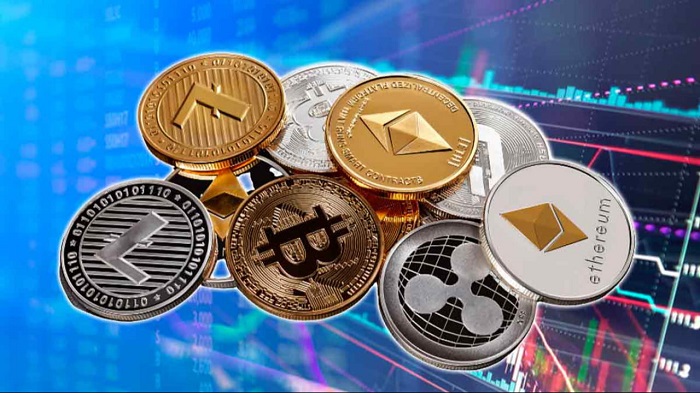In response to the growing demand for cheaper and faster transactions, Layer 2 chains are becoming an essential part of the infrastructure for the future of crypto trading. Layer 2 solutions are built on top of Layer I blockchains such as Ethereum. They offer better scalability and reduced gas fees. They also provide faster settlements. This creates a more efficient trading environment for traders at all levels.
This guide will explore Layer 2 chains, how they are transforming the crypto trading landscape in 2025, and what traders should know to keep up with this changing environment.
What are Layer 2 Chains?
Layer 2 chains are a protocol that runs on top of an Ethereum or Bitcoin base blockchain (Layer 1). They are primarily designed to reduce transaction fees and increase transaction speed without compromising security.
Key Layer 2 Types
- Rollups: Combine many transactions on Layer 1 and settle them.
- State Channels (off-chain channels): Microtransaction channels that are not part of the blockchain.
- Plasma Chains: Sidechains that are independent and commit to layer 1 periodically.
Popular layer 2 chains include
- Arbitrum and Optimism: (Optimistic Rollups for Ethereum).
- Starknet and zkSync (Zero Knowledge Rollups)
- Base by Coinbase, built with the Optimism stack
Why layer 2 chains matter for crypto trading in 2025
By addressing issues that have existed on Layer 1 chains, Layer 2 chains are changing the trading experience.
1. Reduced Transaction Costs
Gas fees remain a barrier on the Ethereum mainnet, particularly for active traders. Layer 2 chains reduce costs dramatically, making low-value and high-frequency trades more viable.
2. Faster trade execution
Layer 2s provide near-instantaneous finality. This is ideal for arbitrage and scalping strategies, as well as automated strategies that depend on the speed of execution.
3. Increased Liquidity
As Layer 2 DEX activity grows, liquidity pools become deeper and more competitive. This is especially true on networks such as Arbitrum and Base.
4. Onboarding Retail Traders
Low fees and faster speeds encourage casual traders to enter the crypto market, thereby reducing friction and encouraging wider adoption.
How Crypto Trading is Adapting to Layer 2 Blockchains
DEX Evolution
DEXs such as Uniswap, SushiSwap, and Curve are expanding into Layer 2s. Uniswap V3 is a great example of a DEX that allows traders to take advantage of advanced features while paying lower fees.
Derivatives of Layer 2
Platforms like dYdX and GMX, which are now part of Arbitrum (and will migrate to Cosmos), offer perpetual futures and leverage with deep liquidity. These features were previously only available on centralized platforms.
Trading Bots and Automation
Crypto Trading Bots, like those offered by Coinrule, are being integrated in Layer 2 environments. This gives users the ability to automate strategies on faster and cheaper networks.
The Benefits of Layer 2 Chains in Trading
| Features | Benefits to traders |
| Reduced Fees | Gas costs are no longer a concern for more trades each day |
| Speed up | Near-instant order execution for better market timing |
| Scalability | More users can be handled without congestion |
| Security Inheritance | Benefit from the security of the base chain (e.g. Ethereum) |
| Better UX | Simpler onboarding and improved trading experience |
Top layer 2 chains for trading in 2025
| Layer 2 Chain | Types of | Popular Trading Platforms | Use Case |
| Arbitrage | Optimistic Rollup | GMX, Uniswap and Camelot | Perps and DeFi swaps |
| Optimism | Optimistic Rollup | Velodrome | DEX trading, lending |
| Base | OP Stack | Aerodrome, LeetSwap | Adoption by new retail users |
| zkSync Era | ZK Roll-up | ZigZag, SyncSwap | Privacy + scalability |
| Starknet | ZK Roll-up | JediSwap, Nostra | High-performance DeFi |
Security and Risks: What Traders Should Know
- Withdrawal Delays – Optimistic rollups usually have a 7-day window for withdrawal.
- Smart Contract Risks: Bugs that affect Layer 2 protocols could cause funds to be lost.
- Some rollups still use centralized sequencers.
Use audited platforms, and keep up to date with protocol upgrades.
Tools for trading on layer 2 chains
Consider these tools to maximize your trading on Layer 2s:
- Automate spot and DeFi trading across exchanges and networks.
- Zapper / DeBank – Monitor Layer 2 DeFi portfolios.
- Bridge aggregators: Use tools such as LI.FI or Rango for quick bridging.
- Wallets – MetaMask Wallet, Rabby Wallet, and OKX Wallet all support major Layer 2.
Last Thoughts: The Future of Crypto Trading is Layer 2s
By 2025, layer two chains will no longer be a niche solution. They will become the norm. The entire crypto trading experience will be redefined as more protocol developers, traders, and developers migrate towards these scalable networks.
Understanding and integrating Layer 2 chain into your trading strategies is crucial, whether you are a DeFi enthusiast or a newbie.
Want to trade Layer 2s more effectively?
Coinrule automates your trades, so you can explore arbitrum, optimism, and other opportunities faster and cheaper.
Automate your trades at Coinrule.com today and take advantage of Layer 2 Crypto trading by 2025.


